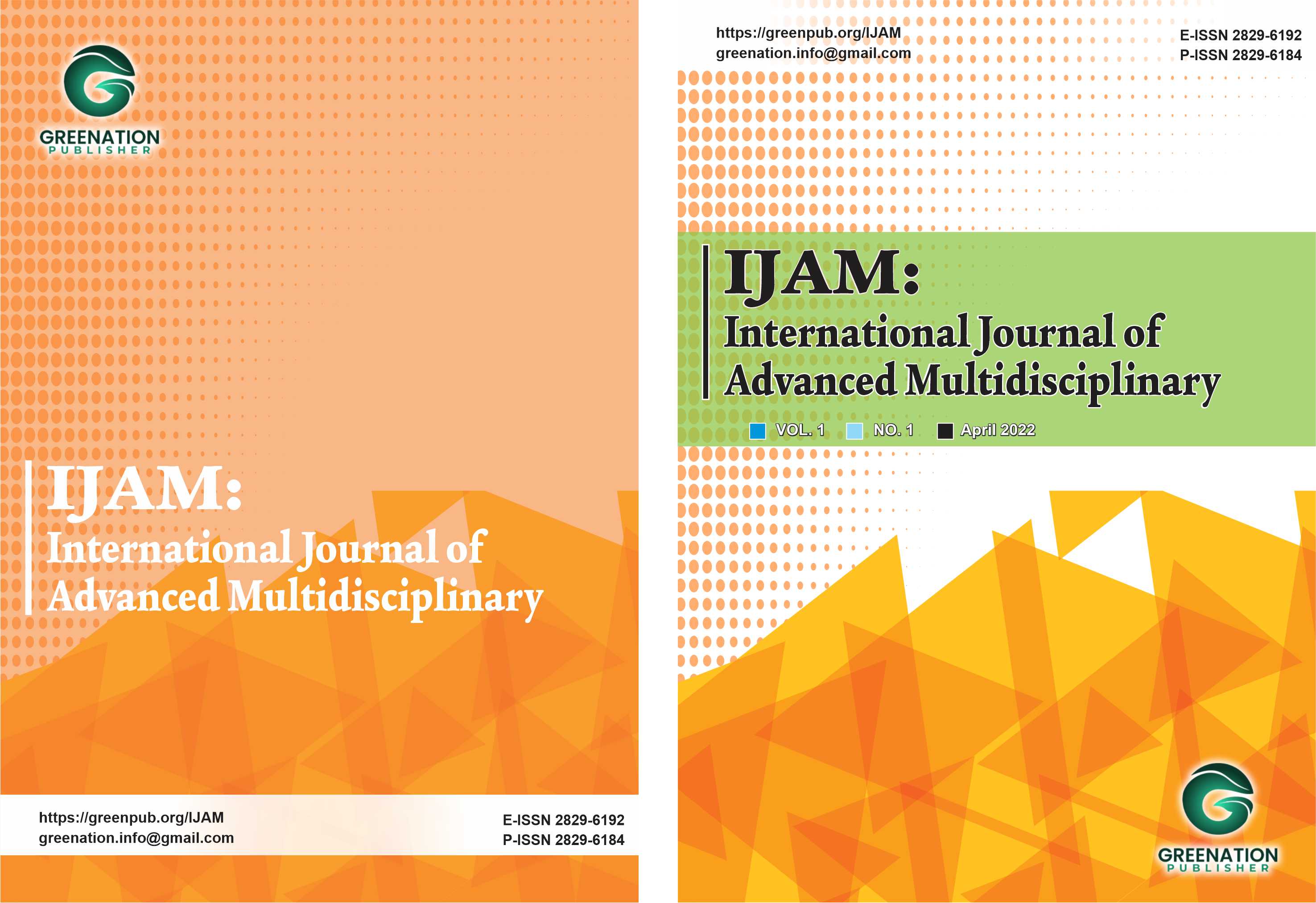Carbon Reduction Program Implementation Strategy on Product Tanker Fleet Against the Carbon Intensity Indicator (CII) Decreasing Target
DOI:
https://doi.org/10.38035/ijam.v2i2.299Keywords:
Shipping Gas Emissions, Carbon Intensity Indicator (CII), Carbon ReductionAbstract
Emissions of gases released into the atmosphere by various human activities on earth cause a greenhouse effect in the atmosphere. Greenhouse gases include carbon dioxide (CO2), sulfur dioxide (SO2), nitrogen monoxide (NO), nitrogen dioxide (NO2), methane (CH4) and chlorofluorocarbons (CFCs). One activity that increases greenhouse gases is shipping. Shipping is a cost-effective and energy-efficient form of bulk transportation, but currently international shipping operations account for approximately 2.5% of man-made greenhouse gas emissions globally [1]. Therefore, in 2018, IMO's initial strategy was adopted to reduce greenhouse gas emissions from ships by reducing carbon dioxide emissions by at least 40% by 2030 and targeting a reduction of carbon dioxide emissions by 70% by 2050. And reduce annual greenhouse gas emissions from ships by at least 50 percent by 2050 compared to 2008 [2]. To reduce the impact of these activities, IMO issued regulation 28 MARPOL Annex VI if ships with a capacity of 400 Gross Tonnage (GT) or more receive a D rating for three consecutive years or an E rating, corrective action is required to achieve an annual operational CII. er to achieve the desired rating in 2025.
References
Ministry of Transportation of the Republic of Indonesia, Minister of Transportation Encourages Maritime Industry Actors to Play an Active Role in Addressing Climate Change: Directorate General of Sea Transportation, 2022.
IMO. RESOLUTION MEPC.346(78) 2022 GUIDELINES FOR THE DEVELOPMENT OF A SHIP ENERGY EFFICIENCY MANAGEMENT PLAN (SEEMP). 2022
H. Lindstad, “Strategies and measures for reducing maritime CO2 emissions,” Energy Policy, 2013.
Lindstad et al, “Reductions in cost and greenhouse gas emissions with new bulk ship designs enabled by the Panama Canal expansion,” Energy Policy, 59, pp. 341-349, 2013.
Buhaug, et al. “Second IMO GHG Study 2009,” International Maritime Organization, 2019.
Faber, et al. “Technical Support for European Action to Reducing Greenhouse Gas Emissions from International Maritime Transport,” CE Delft: NY, 2009.
EMEC, “Green Ship Technology Book,” Brussels: European Marine Equipment Council, 2010.
Lindstad, H., et al, “GHG Emission Reduction Potential of EU-Related Maritime Transport and on its Impacts,” Ocean Engineering, 2015
Lin, S. “Greenhouse gas mitigation strategies: a ship operator's perspective in the container shipping industry,” OAPS (CEE): Nanyang Technological University. Singapore. 2012.
EA Sciberras, et al. "Electric auxiliary propulsion for improved fuel efficiency and reduced emissions," Proc. Inst. Mech. Eng. Part M: J.Eng. Maritime Environ., 229 (1), pp. 36-44. 2015.
Tilig et al, "Systems Modeling for Energy-Efficient Shipping," Chalmers University of Technology, 2015.
Wang, H., Lutsey, N., “Long-term potential for increased shipping efficiency through the adoption of industry-leading practices. In: International Council on Clean Transportation,” international council on clean transportation, 2013.
H. Psaraftis, “Green Transportation Logistics,” Springer International Publishing: Switzerland, pp. 267-297, 2016.
Maddox Consulting, “Analysis of Market Barriers to Cost Effective GHG Emission Reductions in the Maritime Transport Sector,” CLIMA.B.3/SER/2011/0014: London, 2012.
Wärtsila, “Boosting energy efficiency: energy efficiency catalogue. In: Energy Efficiency Catalog/Ship Power R&D,” Wärtsila, 2019.
P. Gilbert, et al., “Technologies for the high seas: meeting the climate challenge,” Carbon Manage., 5 (4) (2014), pp. 447-461, 2014.
Miola et al., “Designing a climate change policy for the international maritime transport sector: market-based measures and technological options for global and regional policy actions,” Energy Policy, 39 (9) (2011), pp. 5490-5498, 2011.
Sjöbom and Magnus, “Energieffektivisering ombord M/S Sydfart: Med hjälp av solceller,” Faculty of Engineering: Sjöingenjörsprogrammet, Uppsala, Sweden, 2014
Corbett et al., “The effectiveness and costs of speed reductions on emissions from international shipping,” Transport. Res. Part D: Transport Environ., 14 (8), pp. 593-598, 2009.
Gucwa and Schäfer, “The impact of scale on energy intensity in freight transportation,” Transport. Res. Part D: Transport Environ., 23, pp. 41-49, 2019.
Johnson and Styhre, “Increased energy efficiency in short sea shipping through decreased time in port,” Transport. Res. Part A: Policy Practice, 71, pp. 167-178, 2015.
Poulsen and Sornn-Friese, “Achieving energy efficient ship operations under third party management: how do ship management models influence energy efficiency?” Res. Transport. buses. Manage., 17, pp. 41-52, 2015.
Downloads
Published
How to Cite
Issue
Section
License
Authors who publish their manuscripts in this journal agree to the following conditions:
- The copyright on each article belongs to the author(s).
- The author acknowledges that the International Journal of Advanced Multidisciplinary (IJAM) has the right to be the first to publish with a Creative Commons Attribution 4.0 International license (Attribution 4.0 International (CC BY 4.0).
- Authors can submit articles separately, arrange for the non-exclusive distribution of manuscripts that have been published in this journal into other versions (e.g., sent to the author's institutional repository, publication into books, etc.), by acknowledging that the manuscript has been published for the first time in the International Journal of Advanced Multidisciplinary (IJAM).























